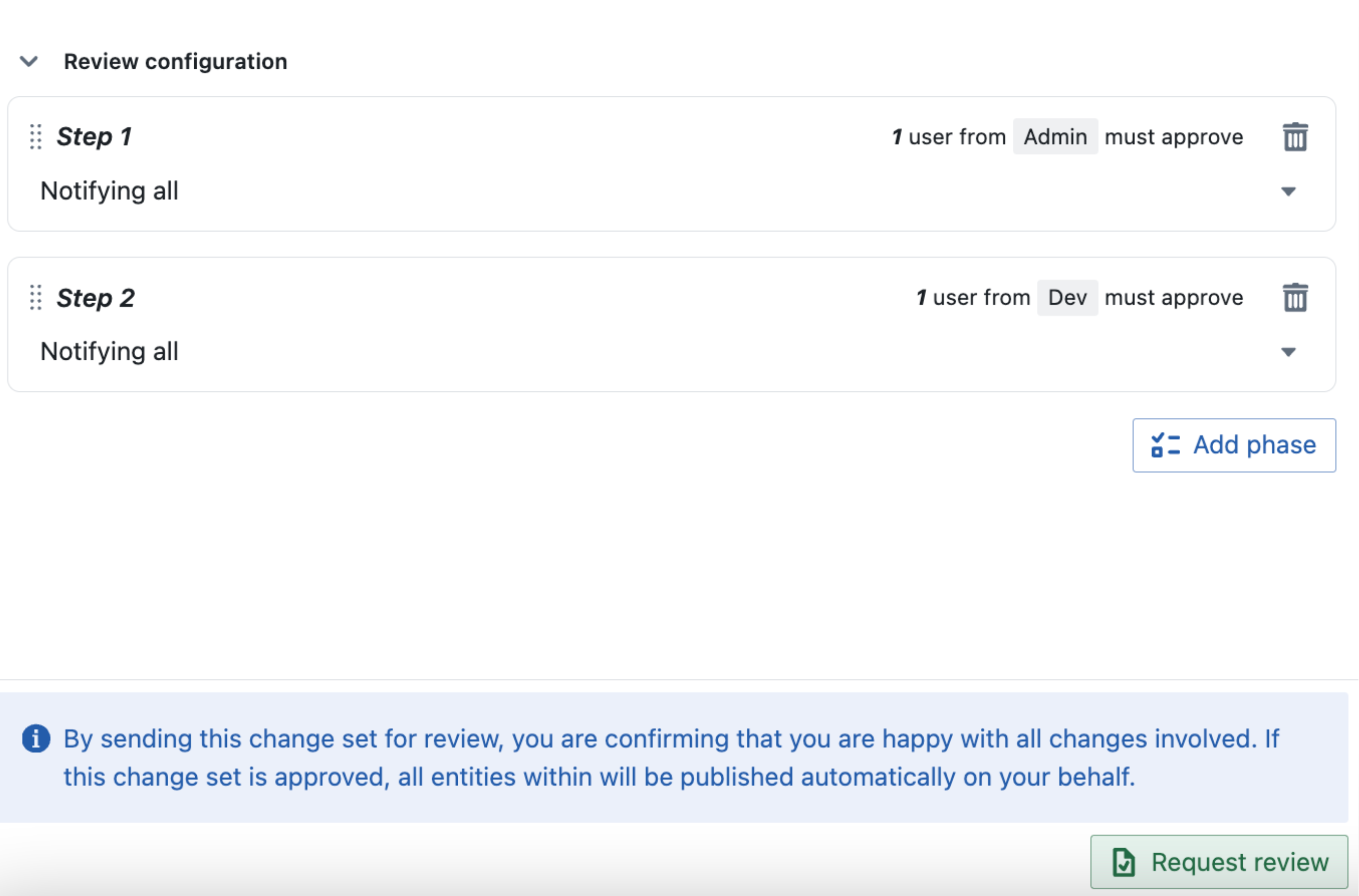Skip to main contentWhat is a change set?
A Change Set is a collection of drafts and related entities undergoing changes together. This ensures that related changes are grouped together, reviewed comprehensively, and published in sync.
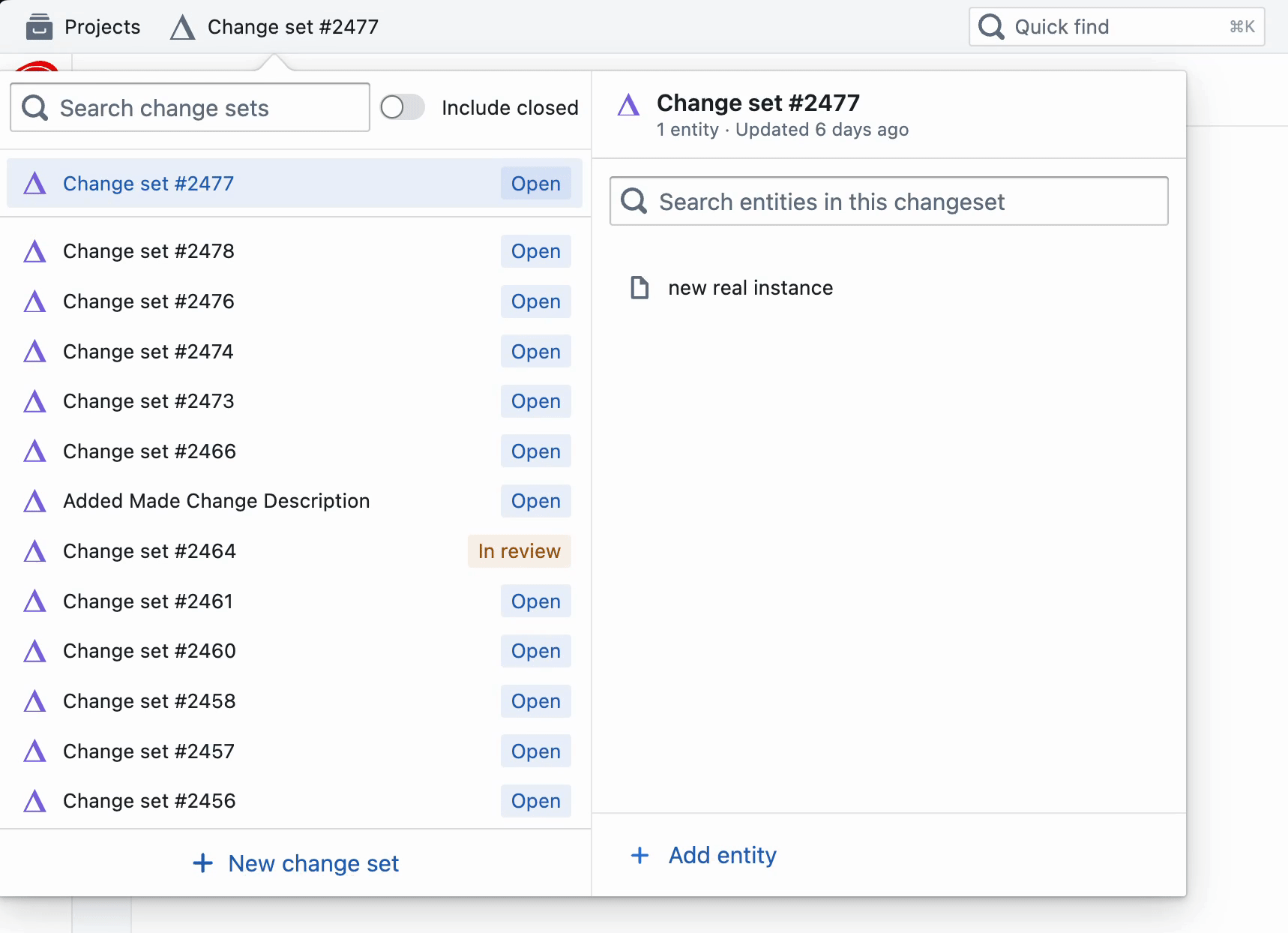
What can be part of a change set?
Whenever a draft is created, it is automatically assigned to a change set. Click on ‘Go to change set’ to view the Change Set.
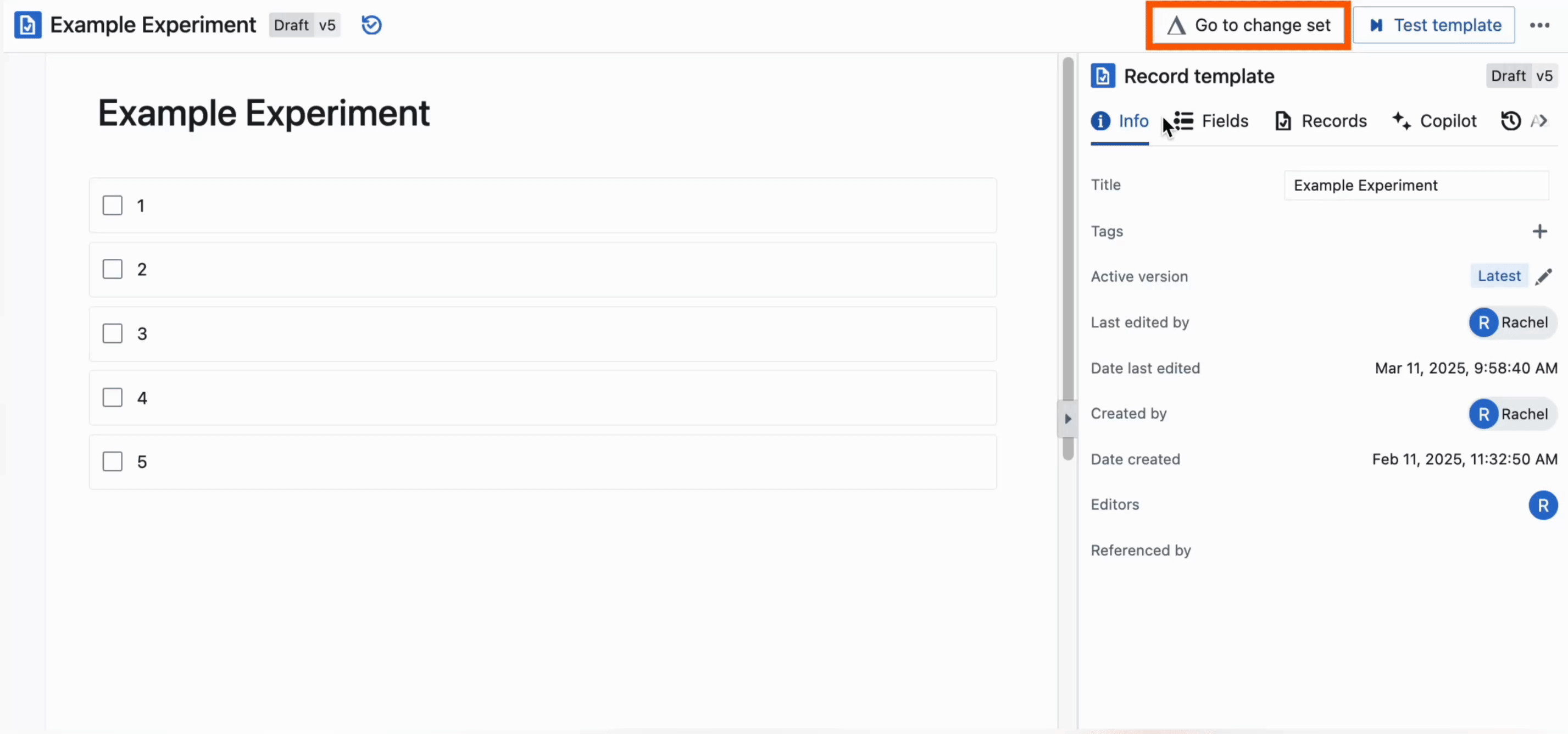 A Change Set can consist of one standalone entity, or multiple related entities. Add entities using the plus symbol on the left hand side. Note that submitted entities belong to the same change set as their parent entity.
A Change Set can consist of one standalone entity, or multiple related entities. Add entities using the plus symbol on the left hand side. Note that submitted entities belong to the same change set as their parent entity.
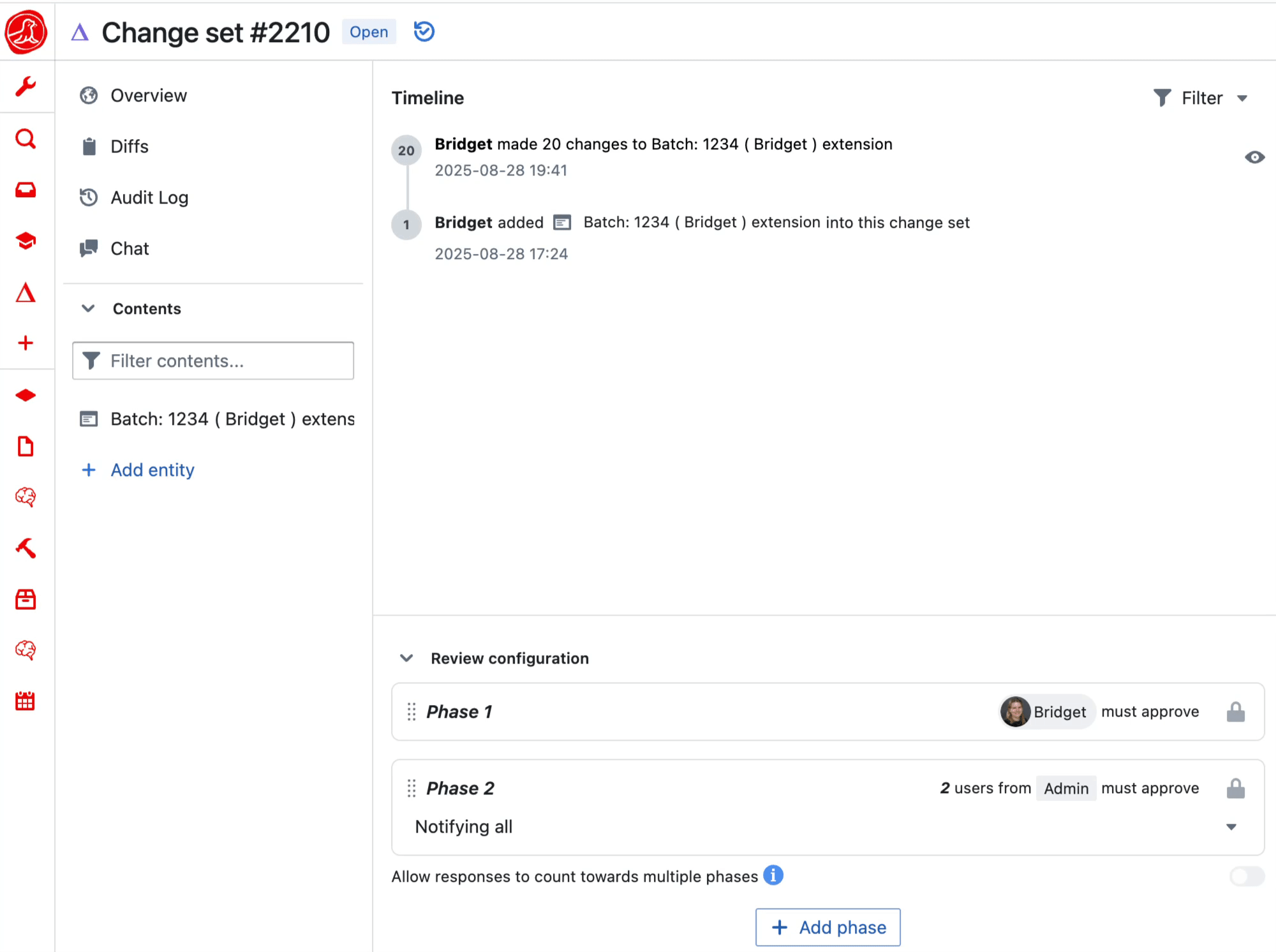
Reviewing and publishing
To review and publish any entity, it must go through a change set process.
All entities in the same change set are reviewed together — all review requirements from included entities are combined.
Learn more about Review Requirements here. 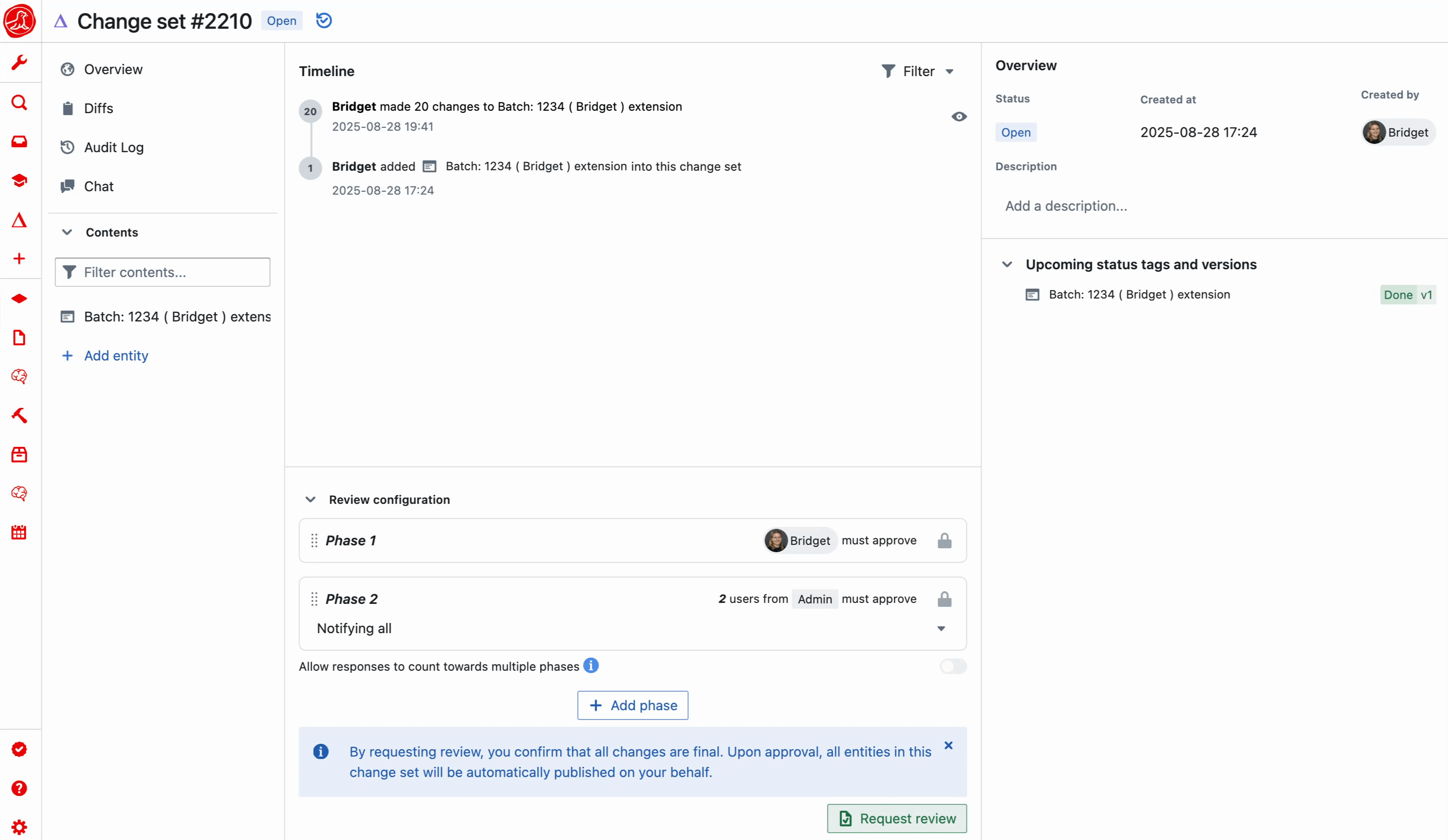 An approval is required for all review conditions before publishing. When a change set is approved, all included entities are published at the same time.
An approval is required for all review conditions before publishing. When a change set is approved, all included entities are published at the same time.
Viewing all change sets
View all change sets from the tab in the top bar.
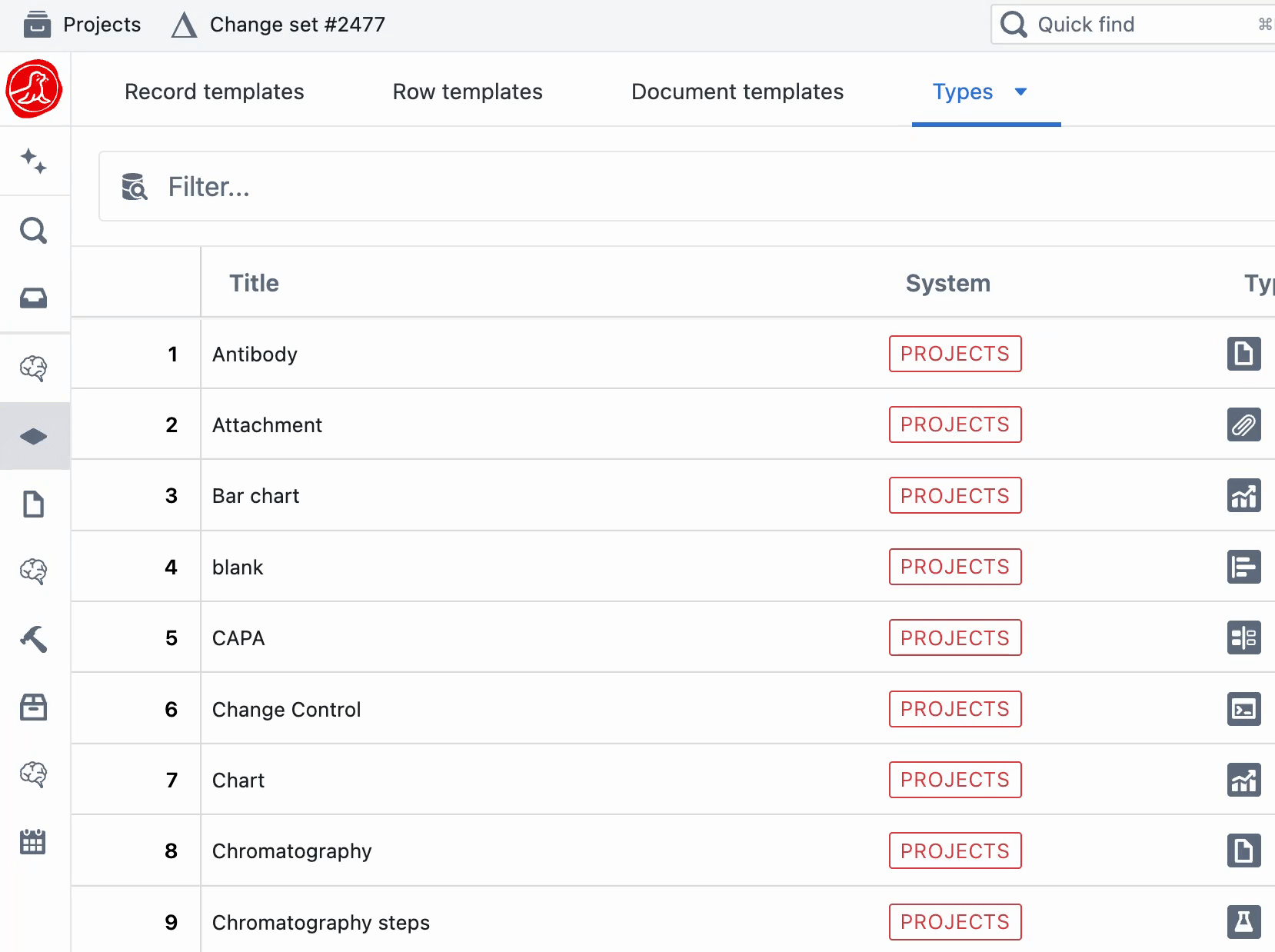
Example Process: A compliant change management process
Effective change management is essential for maintaining a validated state. The Change Set feature is the core of Seal’s integrated change management system, providing the traceability, accountability, and a clear approval pathway for all changes. This applies not just to records and documents, but to the very configuration of your system, allowing it to evolve safely.
The following example process consists of several steps, illustrated with screenshots of a compliant change management process being executed in Seal.
 The process is initiated by stakeholders who identify a need for change. The request is documented in a dedicated change request form, which captures key information such as the change description, justification, impact, and affected (linked) documents or processes.
The process is initiated by stakeholders who identify a need for change. The request is documented in a dedicated change request form, which captures key information such as the change description, justification, impact, and affected (linked) documents or processes.
Step 2: Change evaluation & risk assessment
Once submitted, the change request is assessed for potential impact on product quality, safety, compliance, and operational efficiency. The Seal platform supports this evaluation by allowing stakeholders to link relevant risk assessments and documentation, ensuring that all potential risks are identified and addressed before proceeding.
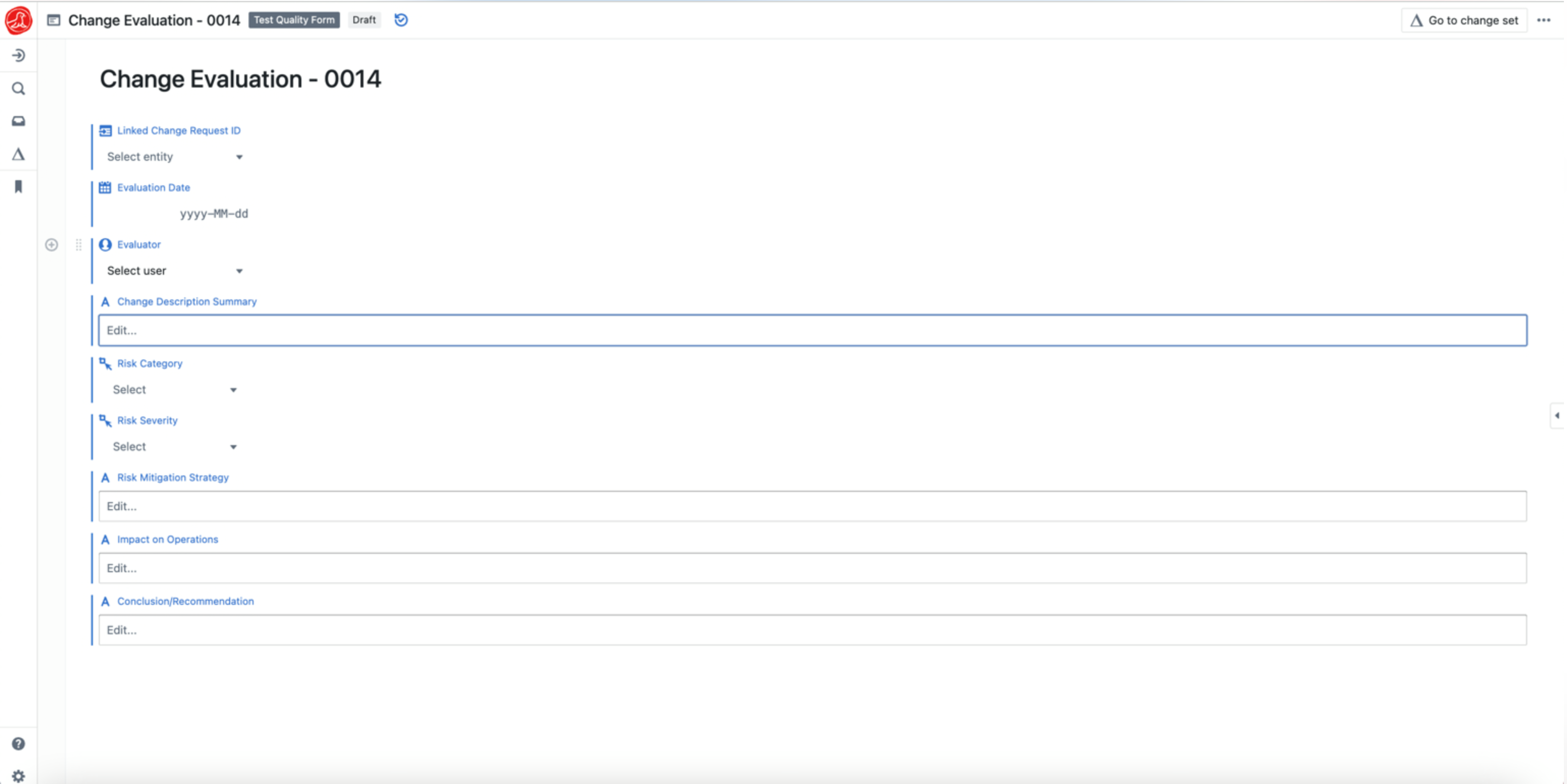
Step 3: Approval process
The request moves through a structured approval workflow, where relevant stakeholders (e.g., Quality, Regulatory, System Owner, Management) review and approve or reject the change.
This process is managed within the Change Set, allowing for automated notifications, tracking, and approval routing. Approval can be completed using electronic signatures, ensuring compliance with regulatory standards.
